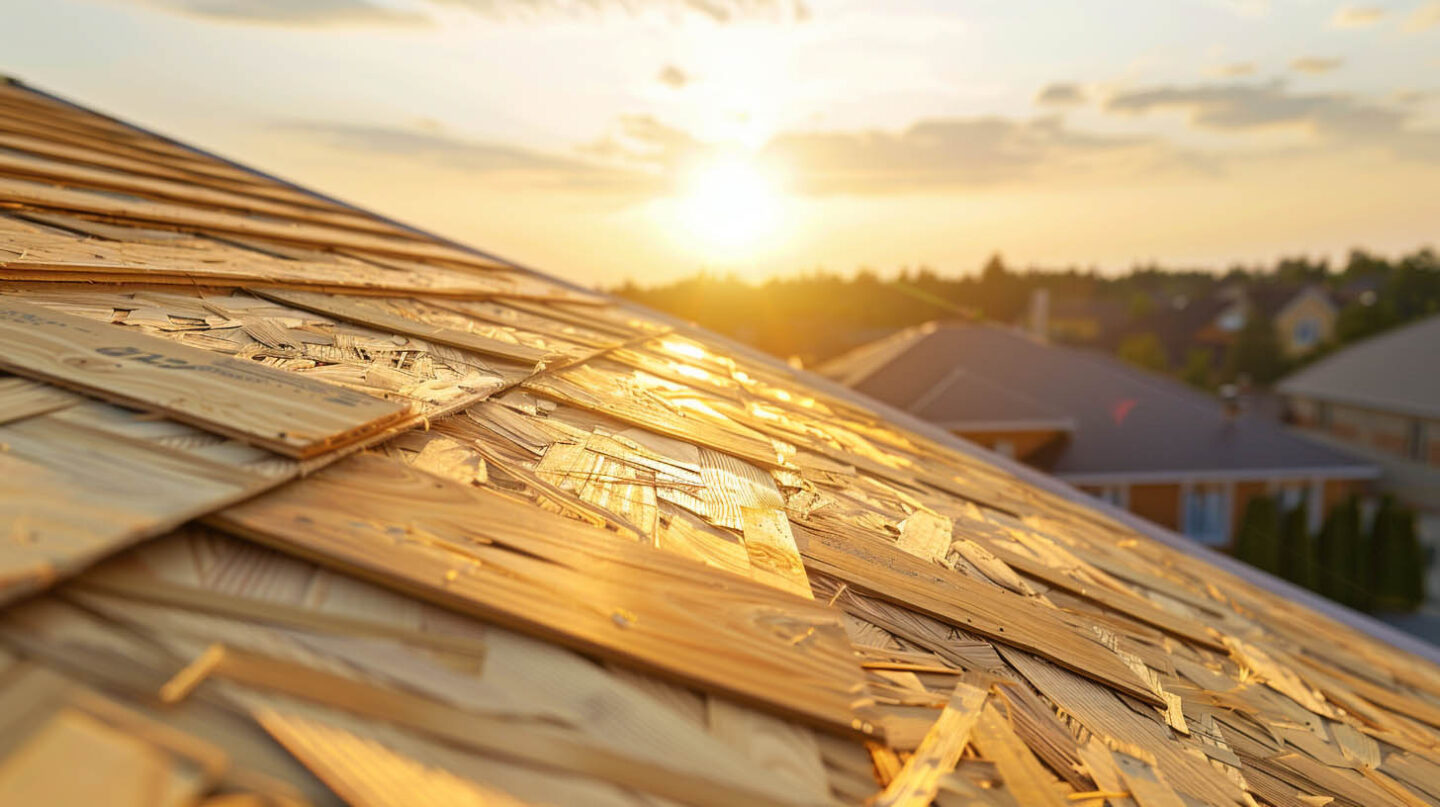When you think about a new roof, your mind probably jumps to the shingles, colors, and curb appeal. But what lies beneath is just as critical. The roof deck is the unsung hero of your roofing system, providing the structural support for all other roofing materials. Choosing the right material for your roof decking—typically between plywood and OSB—is a crucial decision that impacts your roof’s durability and lifespan. At The Shingle Master, we understand the importance of selecting the best materials for your roofing needs in Cary, NC. Our experienced team is ready to assist you in making an informed choice for your home, ensuring that your roof not only looks great but also stands the test of time.
Understanding Roof Decking: The Backbone of Your Roof
Your roof’s strength starts with its foundation. The roof decking, also known as roof sheathing, is this foundational layer, and its condition is paramount to the success of a new roof installation. A solid deck ensures that every other component, from underlayment to shingles, performs as it should.
Understanding the purpose of the decking and the materials used is the first step toward ensuring your roof’s structure is sound for years to come. We will look at what decking does and the most popular material choices available.
What Is Roof Decking and Its Purpose?
Roof decking serves as the structural foundation of your roof, providing support for roofing materials and insulating against moisture. It plays a crucial role in maintaining the integrity of your home, ensuring weather resistance and protecting against potential leaks or structural damage.
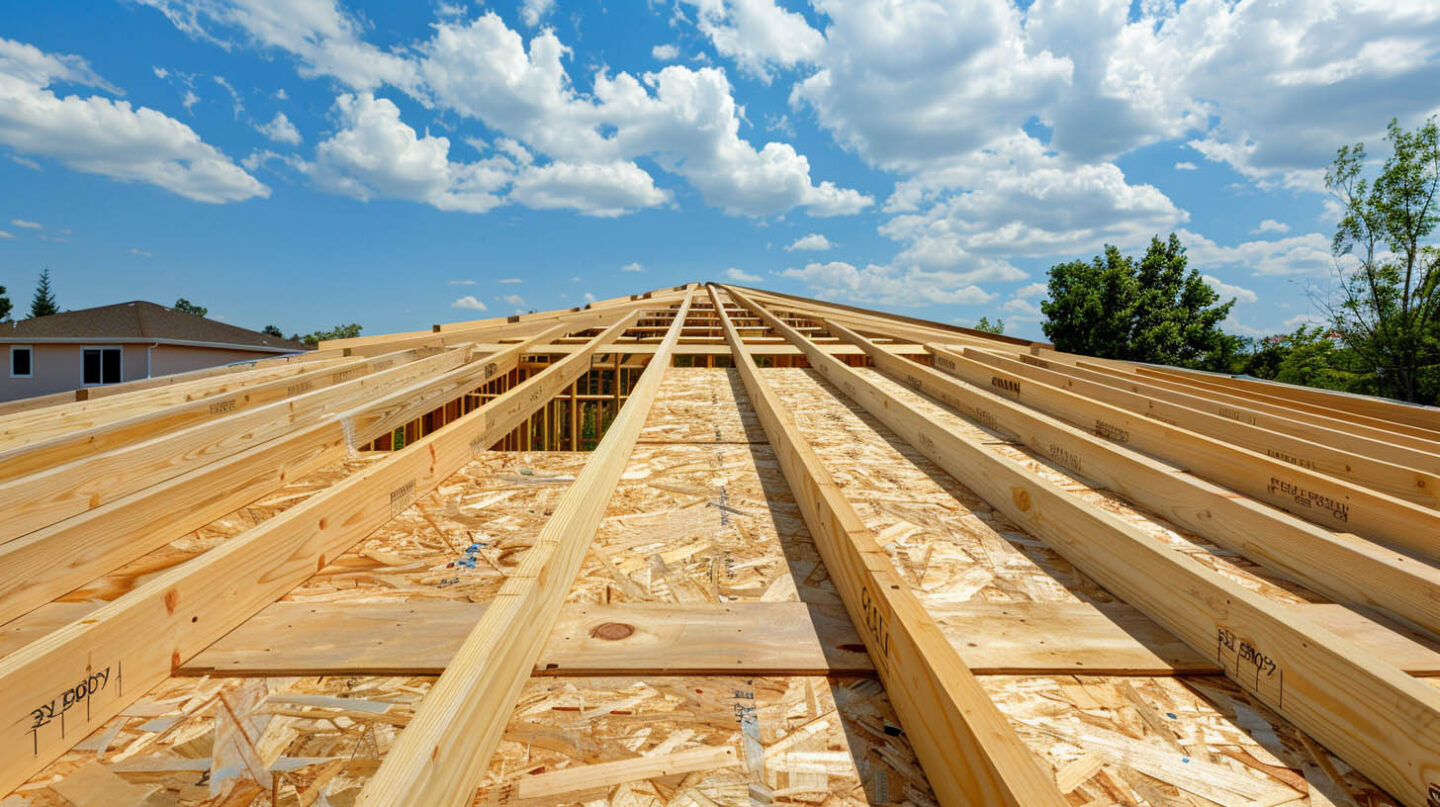
The Most Common Types: Plywood and OSB
Two primary choices for roof decking include plywood and OSB, each with distinct properties. Plywood, made from layers of wood veneer, delivers exceptional strength and moisture resistance, making it a reliable option for various climates. Conversely, OSB, created from strands of wood chips bonded under heat and pressure, offers excellent cost-effectiveness and uniformity. While both materials serve to support roofing materials effectively, understanding their unique characteristics can significantly influence your final decision for optimal performance and durability.
Comparing Plywood and OSB for Roof Decking
Deciding between plywood vs OSB for your roof decking often comes down to a few key factors: performance, durability, and budget. Both are excellent roofing materials, but they aren’t interchangeable in every situation. Knowing how they stack up against each other will help you determine the best option for your home’s specific needs.
Let’s break down how each material is made and compare their strength, durability, and ability to handle moisture. This comparison will give you the confidence to choose wisely.
How Each Material Is Made
Plywood is crafted by adhering thin sheets of wood veneer together with strong adhesives, forming multiple layers. This construction enhances its strength and stability, ideal for supporting roofing materials. In contrast, OSB (Oriented Strand Board) consists of wood strands bonded with resin, oriented in specific directions for improved structural integrity. Each sheet of OSB is designed to resist moisture damage and provide durability, making it a competitive choice. Understanding the manufacturing processes can help homeowners make informed decisions on decking materials.
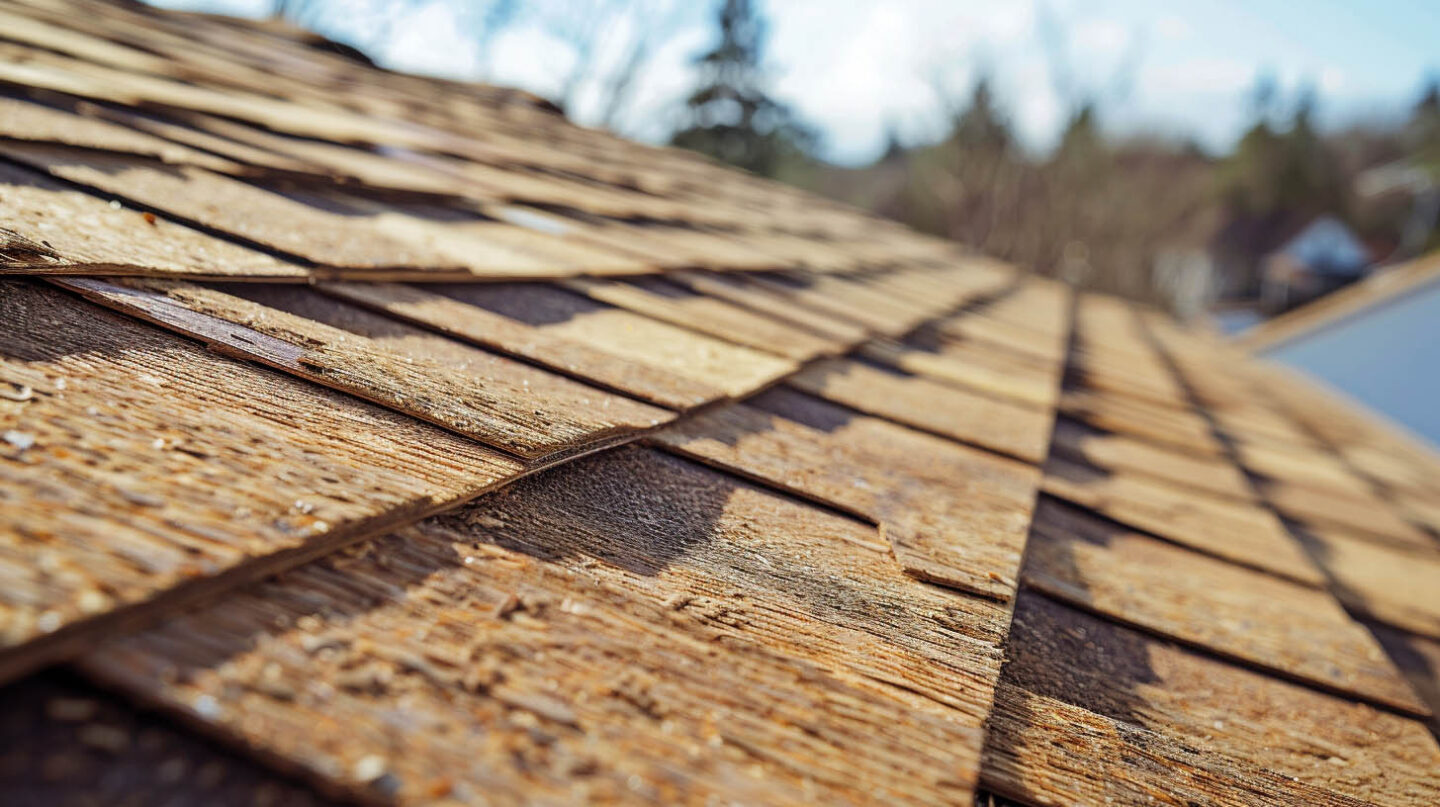
Key Differences in Strength, Durability, and Moisture Resistance
Each material exhibits distinct properties essential for optimal roofing performance. Plywood, composed of layers of wood veneer, offers superior tensile strength, making it resilient against impact and heavy loads. Conversely, OSB, crafted from compressed wood strands, provides good moisture resistance but may be susceptible to swelling in highly humid conditions. Understanding these key differences allows homeowners to make informed decisions based on their home’s specific needs, ensuring effective protection against water damage and enhancing the overall structural integrity of the roof.
Signs Your Roof Decking Needs Replacement
Knowing when to replace your roof decking is crucial for protecting your home. Ignoring signs of wear can lead to severe structural problems and costly repairs down the road. During a roof replacement, your contractor should perform a thorough inspection to assess the condition of the decking.
Catching problems early is the best way to ensure your new roof has the solid foundation it needs. Let’s cover the visible signs of damage you can look for and some specific issues related to both plywood and OSB.
Visible Damage: Sagging, Staining, and Rot
Identifying visible damage is crucial to maintaining your roof’s structural integrity. Sagging areas often indicate moisture-related issues, leading to extensive damage if not addressed promptly. Staining on ceilings or walls signals possible roof leaks, requiring thorough inspections. Additionally, signs of rot in plywood or OSB can compromise the decking material’s strength, heightening the risk of costly repairs. Regular inspections by a qualified roofing contractor help catch these issues early, ensuring your roof remains in optimal condition for years to come.
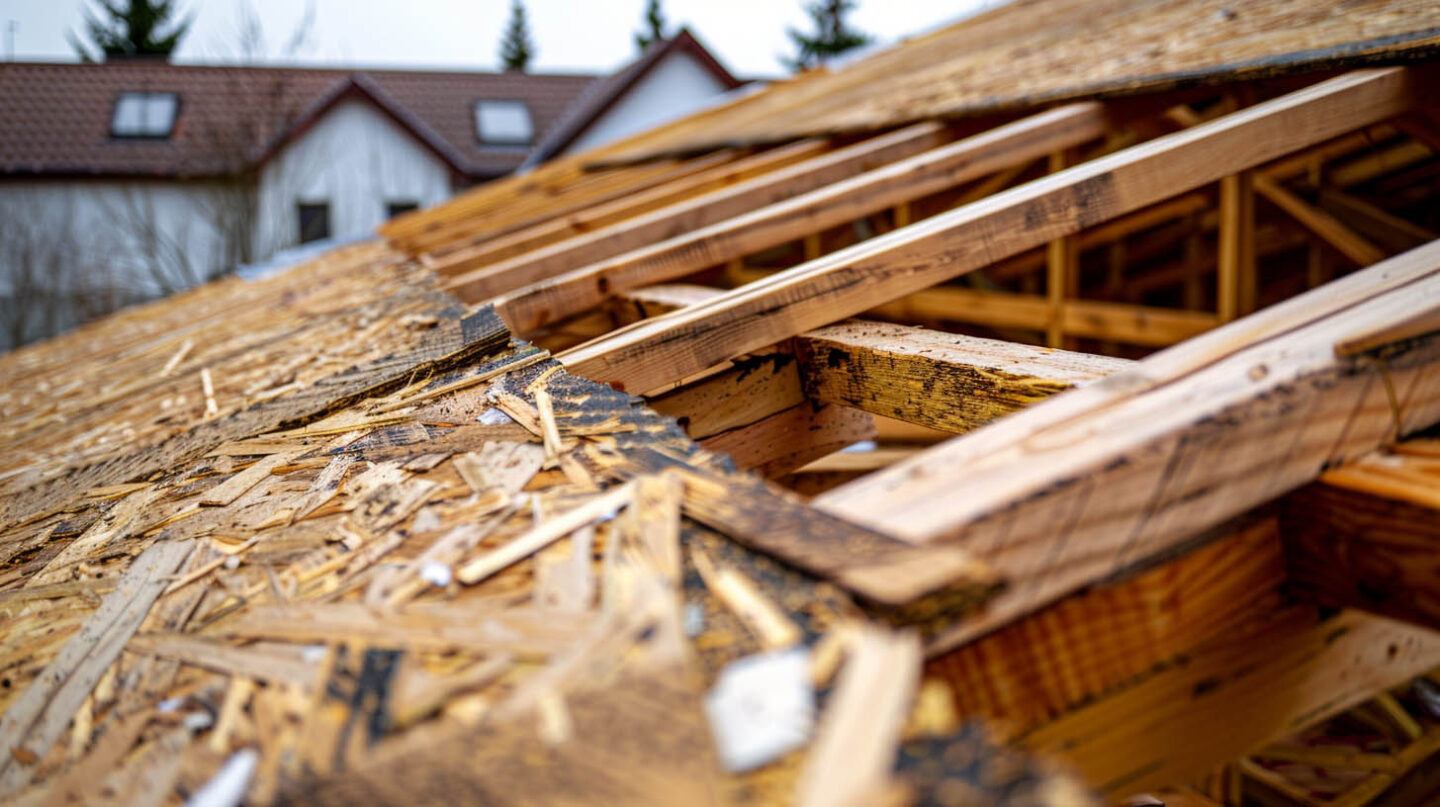
Specific Issues to Watch for in Plywood vs OSB
Identifying specific issues in plywood and OSB is crucial for maintaining the structural integrity of your roof. Plywood is more susceptible to moisture damage, leading to rot and ineffective moisture resistance when exposed to prolonged dampness. Conversely, OSB may show signs of delamination, where layers begin to separate. Regular inspections help spot these early. Additionally, pay attention to any sagging or soft spots, indicating extensive damage. Ensuring you choose the best option for your home’s specific needs can avoid costly repairs in the future.
Assessing the Lifespan of Plywood vs OSB Roof Decking
The lifespan of your roof decking depends on more than just the material you choose in the plywood vs OSB debate. Proper installation, adequate attic ventilation, and your local climate all play a significant role in keeping the decking in optimal condition.
A well-maintained roof deck can last for decades, but certain factors can drastically shorten its longevity. Understanding what influences its lifespan will help you protect your investment and ensure your roof remains strong.
Factors That Influence Longevity
Several key factors significantly impact the longevity of roof decking materials. The quality of installation plays a crucial role, as proper methods ensure structural integrity and optimal performance. Climate conditions, particularly in regions prone to moisture or temperature fluctuations, can exacerbate wear on decking. Regular inspections allow for early detection of potential issues such as water damage or soft spots. Additionally, the choice of materials—such as plywood decking versus OSB—can affect durability and resistance to environmental stresses, influencing the lifespan of your roof.
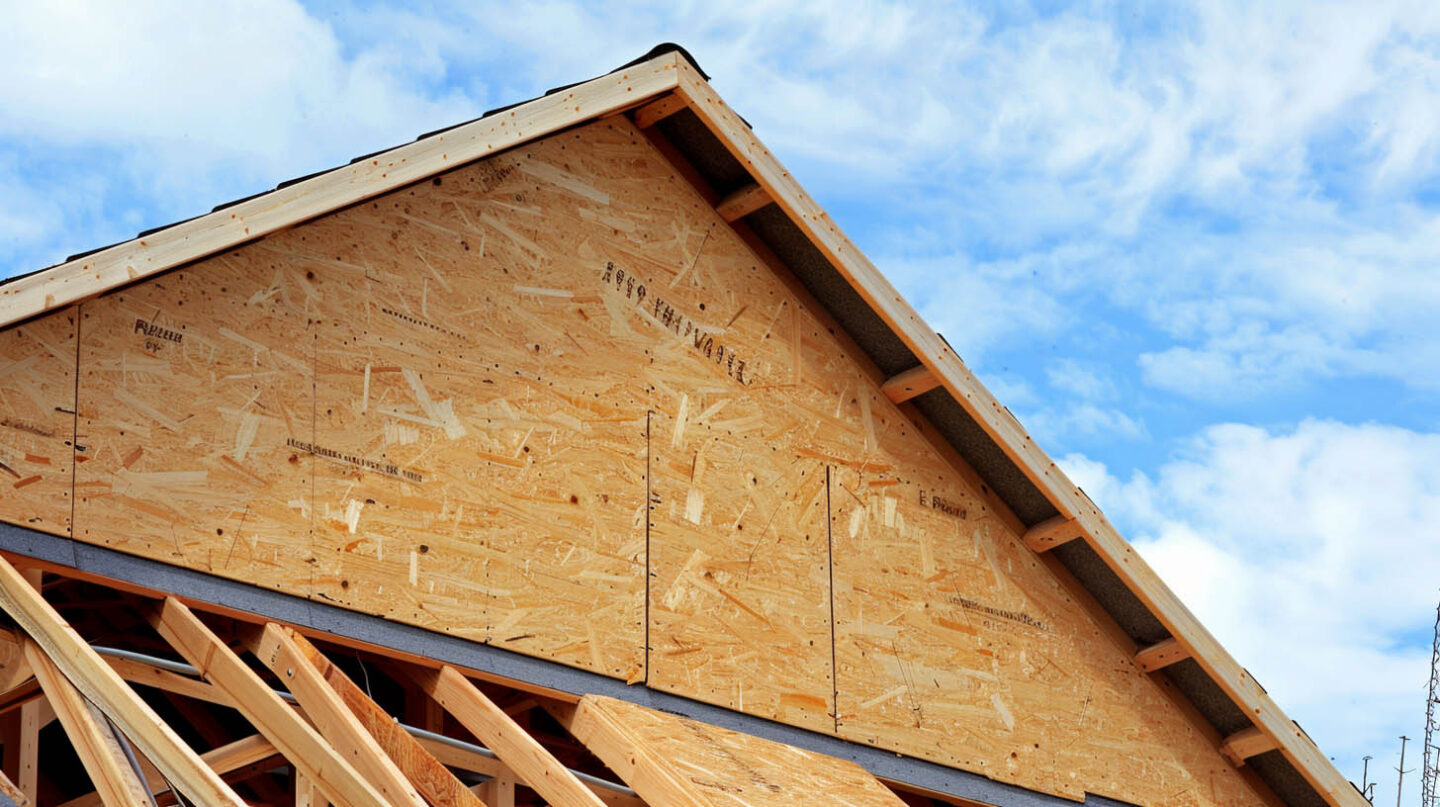
Which Lasts Longer in North Carolina’s Climate?
When considering longevity in North Carolina’s climate, OSB typically offers better resistance to moisture and temperature fluctuations compared to plywood. However, the specific conditions of your roof installation and maintenance practices also significantly impact the lifespan of both materials.
Get a Free Quote Today
In conclusion, understanding when to replace your roof decking is essential for maintaining the integrity of your home. Whether you choose plywood or OSB, each material has its strengths and weaknesses that can affect your roof’s durability and performance. By recognizing the signs of damage and assessing the lifespan of your decking, you can make informed decisions to protect your investment. At The Shingle Master, we are proud to be recognized as a GAF Master Elite Contractor, hold a BBB A+, and are Haag Certified Inspectors. Our team is also a NC Licensed General Contractor and has been awarded Raleigh’s Best Roofing Contractor by NHBA. We are dedicated to providing superior roofing solutions tailored to your needs. Ready to safeguard your home with quality you can trust? Get quotes from us today!
Frequently Asked Questions
When to replace OSB roof decking?
You should replace OSB roof decking when it shows clear signs of wear, especially moisture damage. Look for swelling, flaking edges, soft spots, or discoloration. During a roof replacement, your contractor will conduct thorough inspections and replace any compromised panels to ensure a solid foundation for your new shingles.
When to use OSB instead of plywood?
OSB is preferable when cost, availability, and project size are key considerations. It’s ideal for large roof areas due to its affordability and uniformity. However, consider moisture exposure levels; OSB performs well in dry conditions but may require extra caution in high-humidity environments.
Does OSB rot faster than plywood?
OSB can rot faster than plywood under certain conditions due to its lower moisture resistance. While both materials are susceptible to water damage, plywood’s layered construction often provides better protection and longevity in wet environments, making it a preferable choice for areas prone to moisture.
Read our blog: Algae-Resistant Shingles: How Copper & Zinc Strips Work

